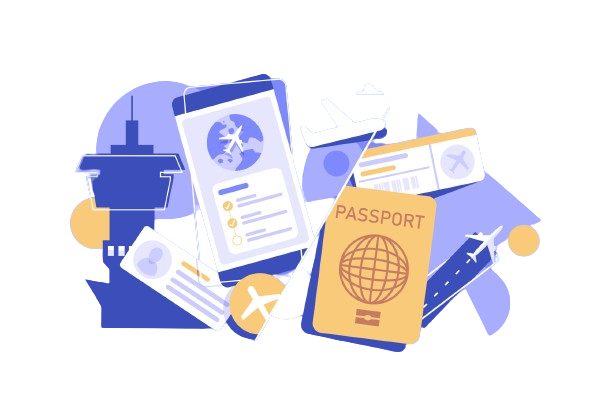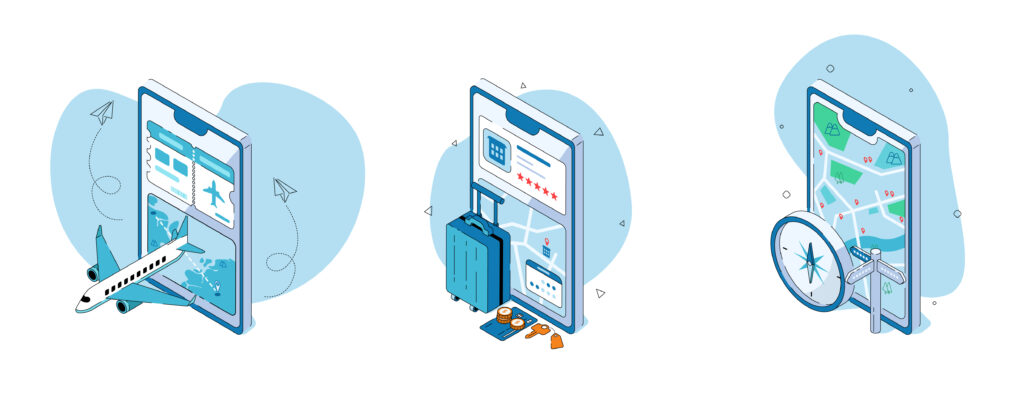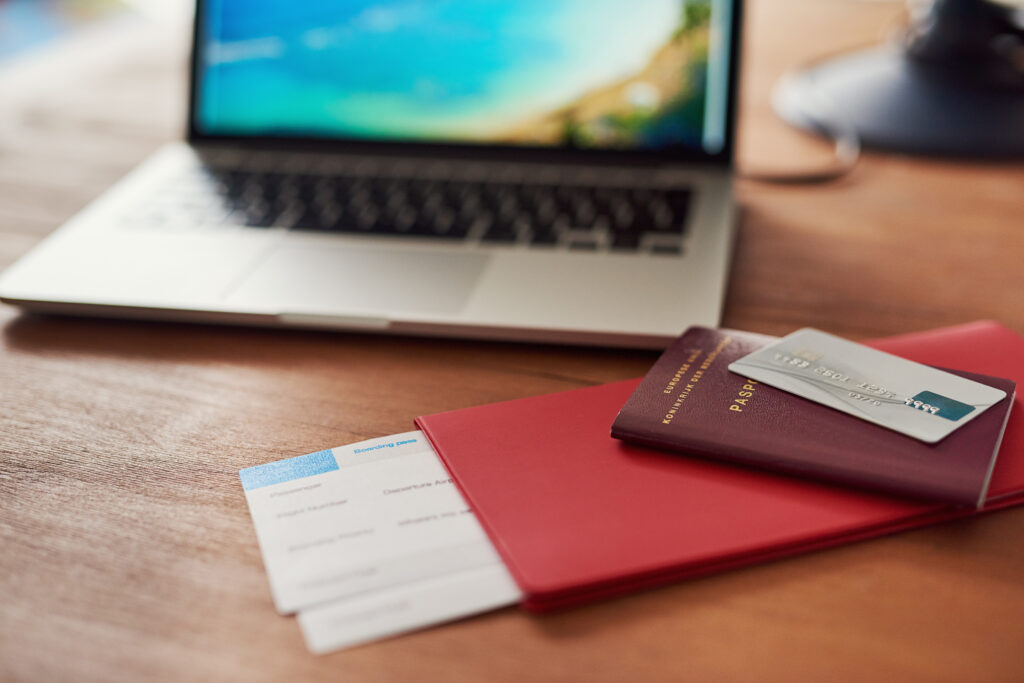The digital visa system is a major change in the travel industry. Improving the visa application process to enhance the tourist experience. The trend of contactless long-distance travel is becoming increasingly popular, making digital visa systems the most popular in recent times, solving many problems for travelers. Visa and immigration procedures are often delayed due to the complexity of administrative systems.
Digital Visa Systems: What Are Them
The digital visa system refers to an electronic platform for governments and authorized agencies to apply for and process applications and issue electronic visas (e-visas) to travelers. This system is designed to replace paper-based visa applications. The goal is to make visa applications more convenient and faster. At the same time, it reduces waiting times and further improves safety.
Although each digital visa system is different, they share similar features. For example, most allow applicants to complete and submit their application form online. How to upload. Required files and documents. You can also track the status of your application directly through the platform. If the visa application is approved, an e-visa will usually be sent to the applicant’s registered email address.

How do Digital Visa Systems work
The digital visa system has its own unique process. But there are most of the steps that people need to follow.
Visa requirements
Providing documents such as a valid passport (more than 6 months), evidence of the purpose of travel, such as medical or business, employment certificate.
Fill out the application form
Specifying details such as personal information, contact number, passport information, travel itinerary and required documents.
Pay the visa fee
Pay via credit or debit card online. The system will not allow you to submit your application until the electronic visa fee has been paid.
Submit application
After filling in complete information with all required documents An official will review your application and decide whether or not to approve your visa.
Waiting for approval
Processing times for digital visas vary from instant approval for expedited visas to a few weeks for more complex visas. The digital visa system aims to provide quick decisions within hours or days to facilitate business and tourism travel. The advantage of the digital visa system is that applicants can check their visa status directly through the online portal.
Get an electronic visa (e-visa)
After the visa is approved, the applicant will receive an electronic visa certificate via email or a download link on the digital visa system. We recommend printing this document to present to immigration officials upon arrival abroad.
NOTE : Applicants should study the digital visa systems in detail before starting the visa application process.

A Digital Visa System’s Benefits
Applicants can apply for a visa from anywhere in the world via any internet-connected device. This eliminates the need to travel to the embassy or visa application center in person, which saves travel time and money. Some of the benefits of applying for a visa online (digital visa) include:
Quickness
Visas can be issued faster and there is no need to sort documents anymore. Makes applicants receive visas faster.
Low cost
Digital systems are cheaper to manage, which can reduce costs for both applicants and visa application centers.
Security
Applicants can submit information and pay directly online. This is safer than sending documents by post. This reduces the risk of theft.
Better data management
Visa centers can manage large volumes of applications more efficiently through their online portal. Digital systems tend to be more accurate and efficient.
Access to more people
Digital visas make the application process more accessible for applicants with disabilities. limited movement or have financial limitations
Examples of Digital Visa
There are many good examples of digital visa systems available abroad. Australia introduced the Electronic Travel Authority (eTA) system in the 1990s, which is effective and straightforward. It processes most applications within 24 hours. The Government of Canada launched the eTA system in 2015, which has significantly reduced wait times. Increase customer satisfaction and make the overall visa application process more manageable.
The United States launched the Electronic System for Travel Authorization (ESTA) back in 2009. The goal was to simultaneously streamline the huge number of visa applications they received each day with improved security. Travelers can apply for visas online through ESTA instead of going through the traditional paper-based process.
India also established the e-Visa system in 2014 to simplify visa applications for international visitors. An online portal allows travelers to apply for visas remote and many receive responses in 72 hours. This faster approval time reflects India’s goal of using technology to improve the visa process and attract more tourists and business travelers.

Limitations and challenges of Digital Visa Systems
The digital visa systems has limitations that applicants should be aware of. The digital visa system is vulnerable to data breaches and theft. This causes personal information to be exposed to be used for fraudulent purposes. Although the digital visa systems has many benefits, it also has potential problems. Online portals can experience glitches and many are inaccessible to people with disabilities, preventing some applicants from taking advantage of a streamlined process like a digital visa.
The good news is that these problems have solutions by implementing the latest security features, while ensuring that the digital visa portal accommodates people with disabilities and other needs. Changes that will benefit the entire application process, appropriate improvements. Existing technology will help reduce problems and maximize benefits. By carefully designing the portal to be usable by all applicants, reliable, reduce disruption and data protection security. Help the digital visa system change in a better direction. Improving the visa application process for applicants.
The Future of Digital Visa Systems
The digital visa system will benefit from improved technology, progress and innovation. Artificial intelligence can be used to automate tasks such as fraudulent applications. Answering applicants’ questions Data pattern analysis and tracking.
Blockchain technology is another potential technology that can securely store visa application data by creating a secure and tamper-proof record of all visa information and application transactions. The mobile application will be improved in the future. Make it easier for applicants to submit applications and receive updates.
The digital visa systems has already improved the visa application process in many countries. Efficient visa application process. It is less expensive and accessible to a wider range of people. The digital visa system allows applicants to apply for and receive an electronic visa without having to deal with the administrative complexities of the traditional paper-based visa application process. Going forward, there are many opportunities for the digital visa systems to integrate innovative digital technology with software to make it even better. Security and automation to enhance the traveler experience and support economic growth and development.

